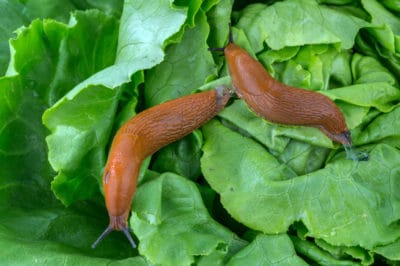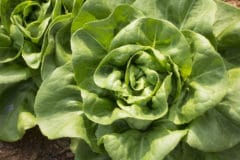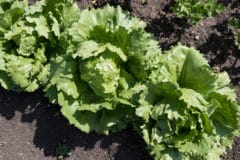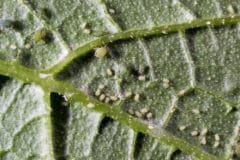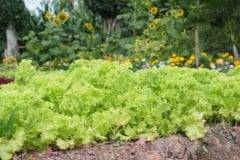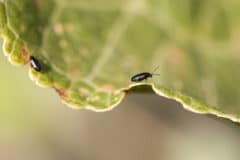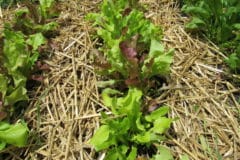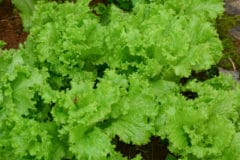Repellant Herbs
Often the solution has less to do with getting rid of a pest and more to do with adding something to the garden ecosystem like a predator or repellent.
One way to repel most pests in the garden is to use companion planting. Aromatic herbs and flowers deter pesky insects from wanting to lay eggs in the garden. Herbs that will repel insects include:
- Wormwood
- Southernwood
- Lavender
- Sage
- Rosemary
- Garlic
- Chives
- Mint
- Dill
- Basil
Aphids
Aphids can be grey, green, brown or black. They cluster on the undersides of leaves and can be difficult to spot at first. These bugs hatch from overwintered eggs in the springtime and suck the sap from tender plant shoots. This weakens and damages lettuce plants and raises the risk of disease.
A healthy diverse garden will combat aphid damage on its own. The presence of predators including ladybugs, lacewings, or parasitic wasps will keep aphid populations down. Plant herbs like cilantro, dill, fennel, and dandelion near lettuce to attract predatory insects. Sometimes an organic spray of neem oil or concentrated garlic is necessary.
Slugs
Cool season plants in moist climates can suffer from slug and snail damage. Young lettuce is especially susceptible. They hide during the day and emerge at night to eat. Slug damage can be diagnosed by the slime left behind on the leaves or the presence of young slugs tucked between the leaves and stem. Surprisingly, hand-picking slugs does a great deal to help get rid of them. It’s best done at night when they are out.
Ducks and snakes are natural slug predators. Gardeners often run ducks through a garden prior to planting. Give them a few days to really dig out all the young slugs and eggs. Then move the ducks and plant your seeds. Organic slug bait is available from garden supply stores for extra sensitive plants.
Caterpillars
Caterpillars are a large family of insects, and possibly the most destructive to lettuce crops. There are so many including cutworms, armyworms, earworms, and loopers. These bugs fly into the garden as moths and lay clusters of eggs on the leaves of plants. The eggs hatch within days and the offspring begin to eat ragged holes in the leaves of your lettuce.
Encouraging predatory insects is an excellent way to reduce caterpillar damage. Attract predators of caterpillars like Insect-eating birds, assassin bugs, ladybird beetles and paper wasps to help protect your plants. Insect barrier fabrics are designed to keep these critters out and your lettuce plants safe.
